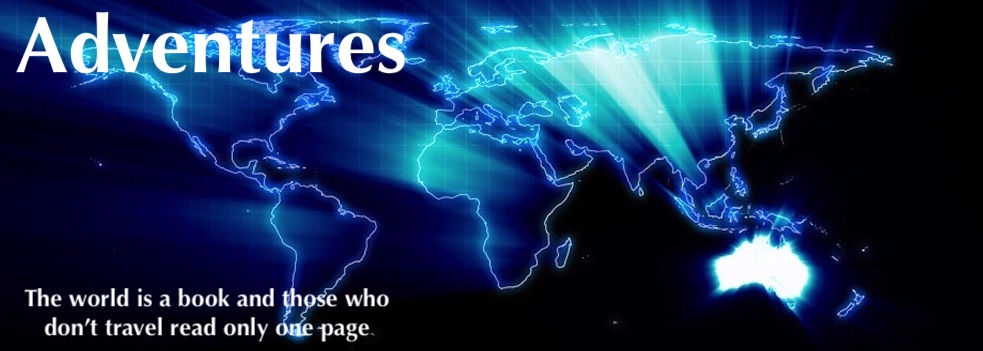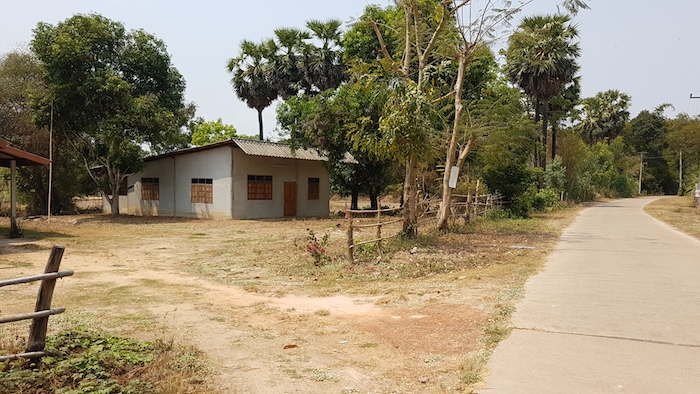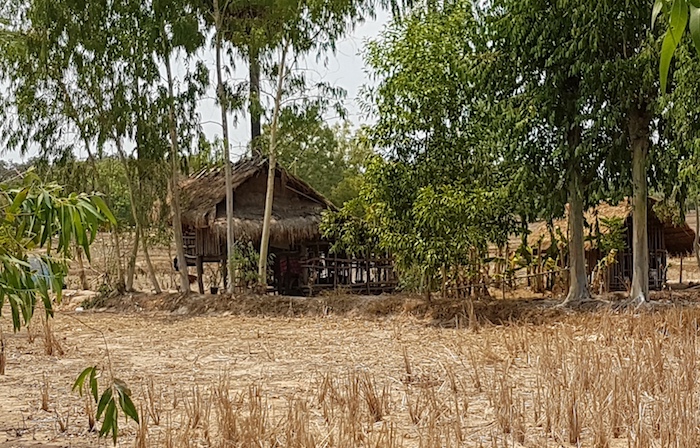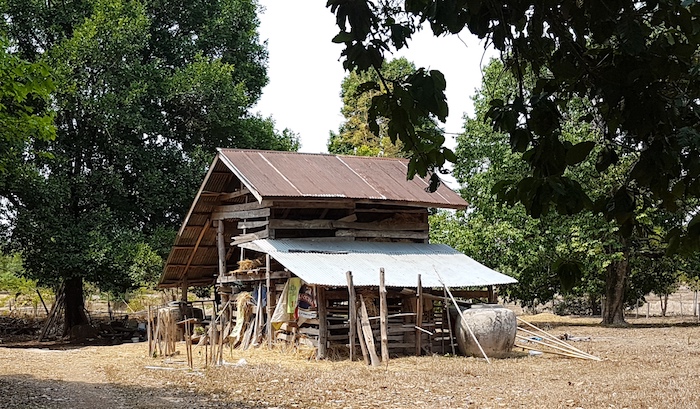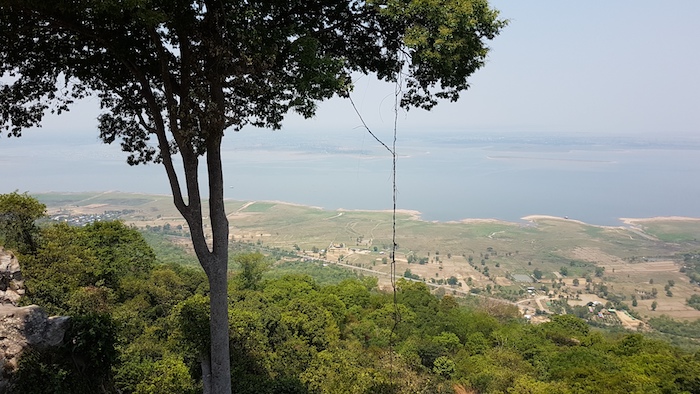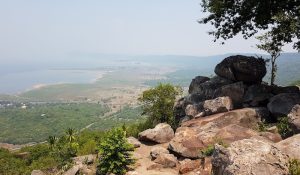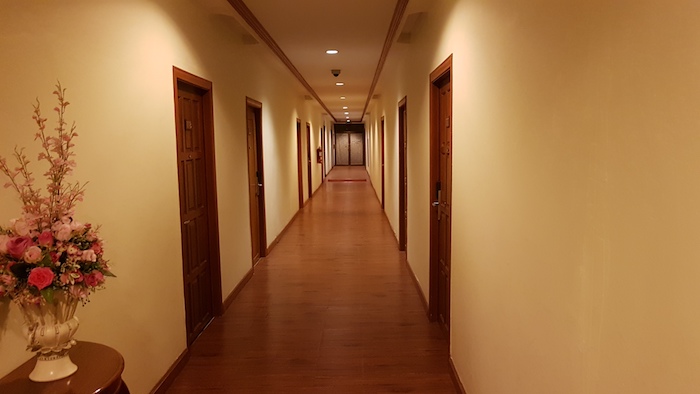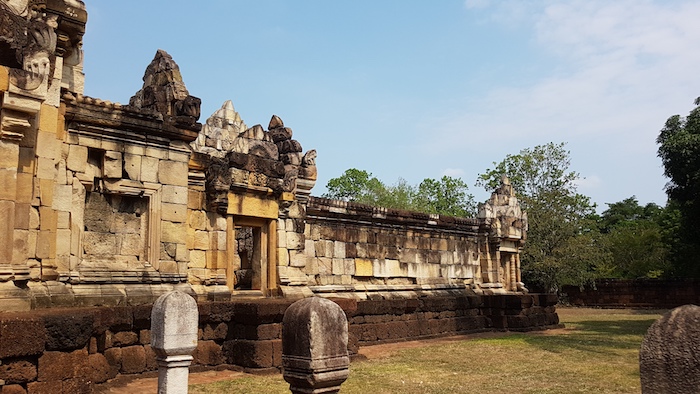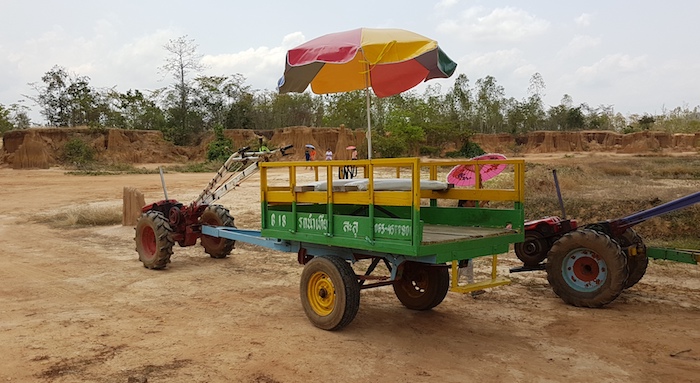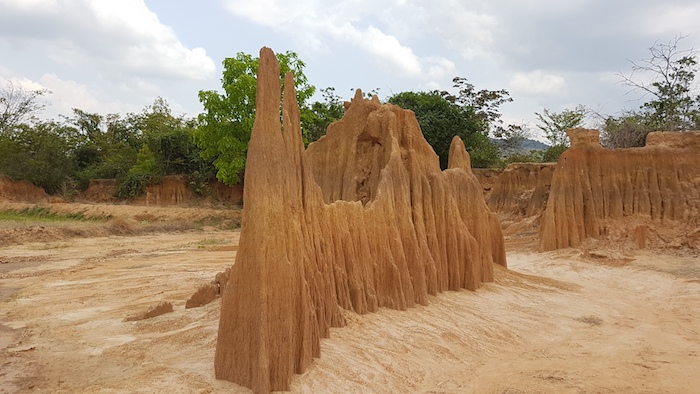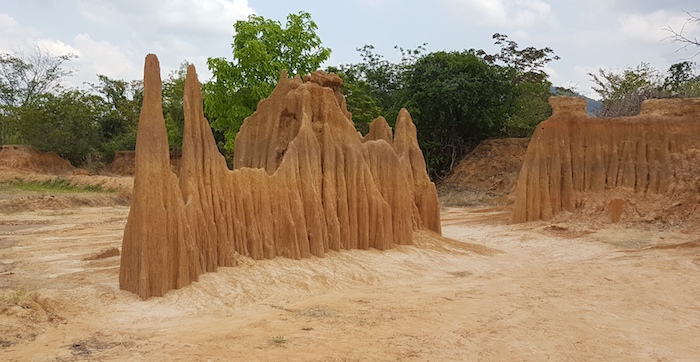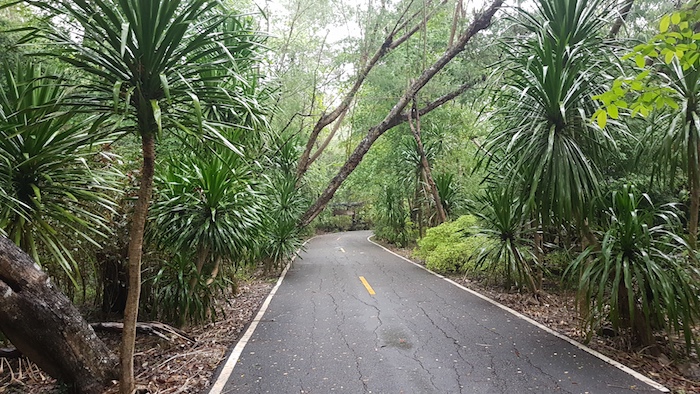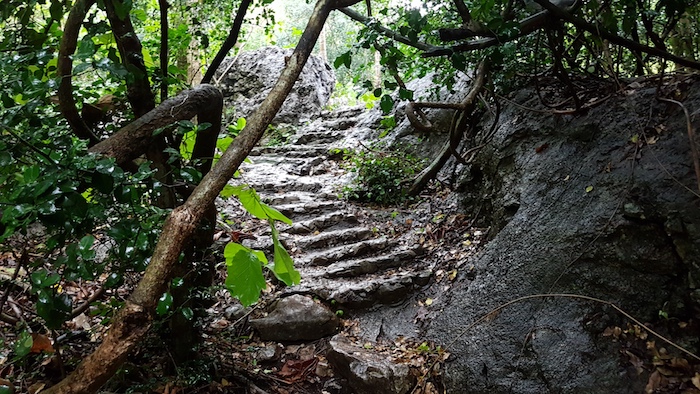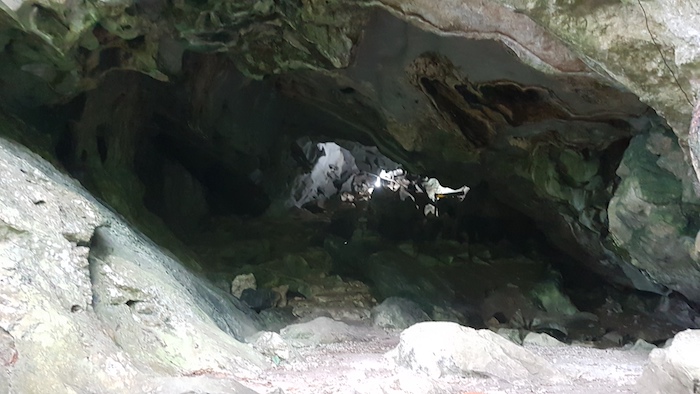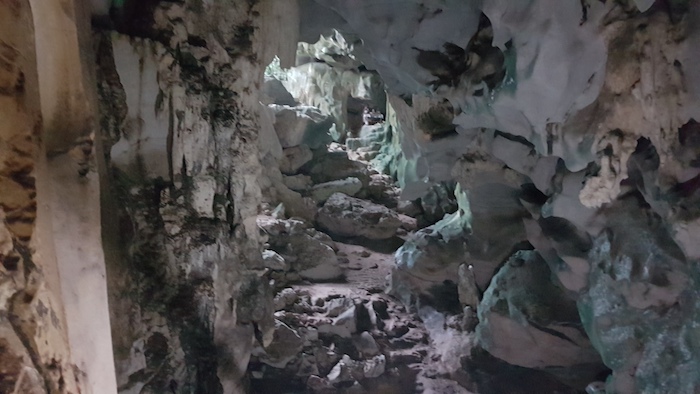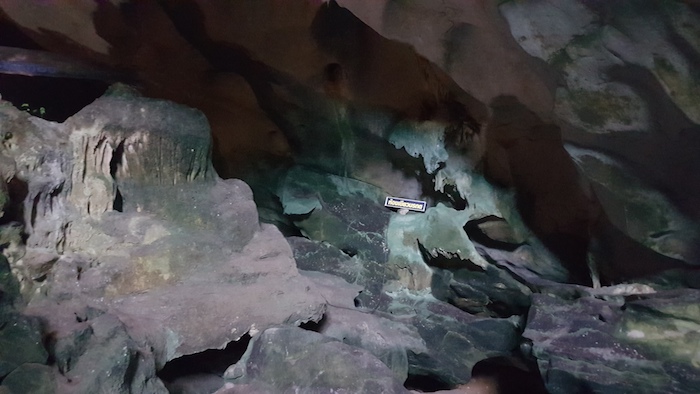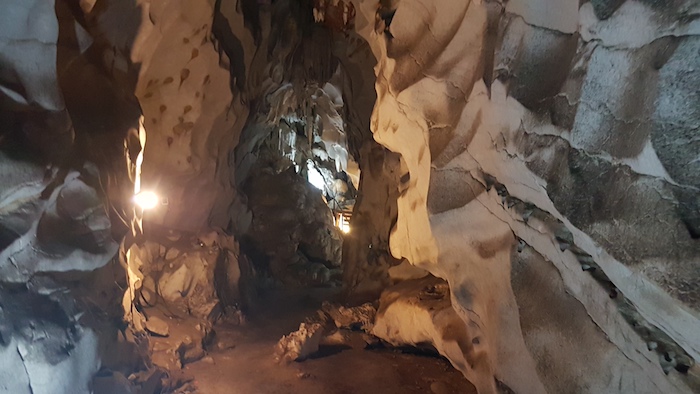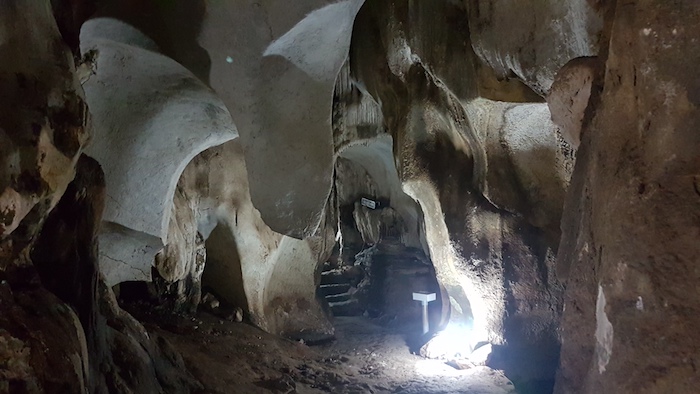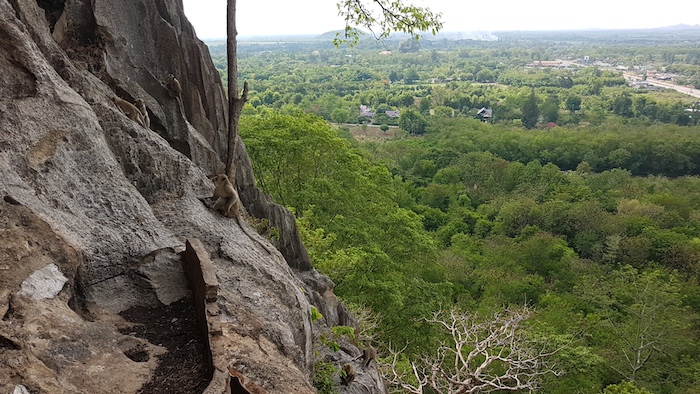Songkran
April in Thailand is Songkran, the water festival – the beginning of the New Year. It is hot, very hot. High 30s with the occasional 40 thrown in as a reminder that it is hot! And humid.
Songkran Day is 13 April, however, the festivities extend for the best part of a week. Traffic is horrendous as millions return to their home village for the holiday. In 2019, 46 people died on the first day of the holiday break – or, as it becoming to be known, ‘Seven Days of Danger’.
Rural Isaan
Khamcha-I, where I stayed, is a village in the Khamcha-I District, Mukdahan Province. Asian Highway 16 (Mukdahan to Khon Kaen) runs through the village. It is a very busy, though still very rural, Isaan focal point.
- Near Khamcha-I
- Near Khamcha-I
- Near Khamcha-I
- Near Khamcha-I
- Near Khamcha-I
- Near Khamcha-I
Nam Phong National Park
Nam Phong National Park, is 35 kilometres north-west of Khon Kaen. Cliff top viewpoints, a short walk from the carpark at the summit, offer great views over the huge Ubol Ratana Dam reservoir.
- View over lake from the summit at Nam Phong National Park.
- View over lake from the summit at Nam Phong National Park.
- View over lake from the summit at Nam Phong National Park.
The drive to the summit is even better than that at Phu Ruea National Park. Some motorcyclists arrived while we there. They didn’t even bother to take in the views. They just enthused about the ride up the mountain, jumped on their bikes and headed down the hill for another thrill ride.
There are a series of 20 or so Interesting rocks 200-500 metres north-east of the carpark.
- At Nam Phong National Park.
- Interesting shaped rocks at Nam Phong National Park.
- Interesting shaped rocks at Nam Phong National Park.
- Interesting shaped rocks at Nam Phong National Park.
- Interesting shaped rocks at Nam Phong National Park.
The park is named for the Nam Phong River, impounded by the dam.
South towards Korat then Aranyaprathet
We forewent Khon Kaen’s Songkran celebrations in lieu of an early start for our adventure in the south.
As we headed south out of Khon Kaen there was a solid two lanes of traffic headed in the opposite direction for the 180 kilometre drive to Korat – and the north-bound traffic most likely extended further south of Korat all the way to Bangkok. All heading home for Songkran.
We turned off the highway before Korat, heading to Sa Kaeo, however, the directional signs for Lam Chae Dam diverted us from the highway. As is so often the case in Thailand, after the first bit of signage, the rest is guesswork. It was no different this time but we eventually found our way to the dam.
- Lam Chae Dam
I intended to go through the Thap Lan National Park to Sa Kaeo. It was many kilometres shorter and, I reasoned, it would be a much more interesting drive.
The Ranger at the Pay Station told us that the road did not go through to Sa Kaeo. Execute Plan B. I chose to go east around the National Park through backcountry Thailand. This is a cassava-growing area.
- Cassava stalks near Lam Chae.
Cassava is extensively cultivated as an annual crop in Thailand (and throughout tropical and subtropical regions worldwide). It has an edible starchy, tuberous root that is a major source of carbohydrates. It is one of the most drought-tolerant crops, capable of growing on marginal soils. Thailand is the world’s largest exporter of cassava starch, although not the largest producer (Nigeria is). Cassava starch, called tapioca, is used for food, animal feed and industrial purposes.
Prasat Khao Lon at Thap Rat
We worked our way south through farming country and after two false starts found the isolated and rarely visited Prasat Khao Lon. It is undergoing restoration.
- The pathway to Prasat Khao Lon, Thap Rat District, Sakeo Province.
- Restorations at Prasat Khao Lon slowed down considerably for the summer, however, they are in perpetual state of renovation.
Another very hot day. We decided to ‘reset’ at Aranyaprathet. The Indo-China Hotel has a pool.
- Indo China Hotel, Aranyaprathet.
We noticed a few Farangs at the hotel but saw none while out visiting the various attractions. Isaan covers the north-east of Thailand, bordering Laos in the north and Cambodia to the south. It extends to the Petchabun mountains to the west where we explored earlier. And while Isaan covers 30% of the country with a similar share of the population it is very much off the tourist trail – which makes it attractive for those tourists who want to avoid crowds and see the ‘real’ Thailand.
Sadok Kok Thom
As we got closer to Sadok Kok Thom Historical Park next morning the Army’s presence was very noticeable. There is a border crossing with Cambodia near Khok Sung.
- Extensive work has been done in and around the wat.
The ancient remains at Prasat Sadok Kok Thom are the biggest and most important of East Thailand.
In the Hindi language, Sadok Kok Thom means “the city full of papyrus in the big pond”. Papyrus can still be seen in the middle of the pond not far from the prasat.
Like all Khmer temples, Sadok Kok Thom is oriented towards the East.
There seems to be confusion on when Prasat (castle/temple) Sadok Kok Thom was built, however, the discovery of two stone inscriptions with Khmer characters on them (now preserved at the National Library, Department of Fine Arts) reveals that the prasat was built in 857, and renovated in 1052.
- Sadok Kok Thom is an ancient Khmer temple.
The Khmer Empire ruled much of South East Asia from the end of the 9th century to the 15th century and their hegemony extended into modern day Thailand to Phimai, Buri Ram and further north west.
- A side wing of the temple.
Sadok Kok Thom has been extensively restored to the way it is believed to have looked. Original material was used as much as possible but wherever it was not available newly made blocks were used. The colour difference between old and new is quite obvious.
The remains of the Khmer Empire at Sadok Kok Thom provide appealing alternatives for a visitor to avoid the hordes of tourists at the more famous Angkor Wat at Siem Riep, Cambodia.
Lalu Sand Pinnacles
I was once at Nambung National Park just north of Perth with an American geophysicist who was commenting ecstatically about Western Australia’s iconic Pinnacles, and the processes that formed therm. I suppose he would be mildly impressed by Lalu in Sa Kaeo, too.
- Many hundreds of these.
- Our mode of transport.
- Very interesting formation.
- Sand pinnacles
- Sand pinnacles.
- Sand pinnacle at Lalu.
Petch Pho Thong Tham (Cave)
We worked our way south to Petch Pho Thong Tham. Along the way we ran into a local thunderstorm. It was still raining when we arrived.
Access to the cave required a 600 metre walk along a bitumen road and then a 200 metre walk along a bush track. The entrance to the cave is uncertain and poorly marked but once inside it is magical – just enough lighting to show the way and highlight features.
- Road to cave.
- Pathway to cave.
- Entrance to cave.
- Once inside it is awe inspiring.
- Directional signage deep inside the cave.
- A shawl.
- Intimidating walkway.
- Midway
- Another drive.
We left the cave heading north on Highway 317. Google Maps highlighted a 35 minute delay ahead. I took to the backroads, confident that my Hema moving map software would get us around the issue. We were driving on backcountry dirt roads for 30 minutes or more to avoid the congestion. The sight of a policeman directing traffic at a gravel road, backwater intersection confirmed the wisdom of our ‘rat run’ decision.
We discovered a nice place for an overnight stay in Sa Kaeo – Golden House.
Wat Tham Khao Chakan Cave
We passed this ‘must see’ place yesterday while on our ‘rat run’. It was necessary to back track from Sa Kaeo 15 kilometres on Highway 317 to see what the attraction was.
- These steps were reasonably easy. The ladder towards the top was a little more difficult.
- At the top of the cave. A monk and his dogs inhabit the platform.
- View from the cave.
We headed north back to Khon Kaen and the traffic congestion we saw (but didn’t experience) at the beginning of our trip was repeated in the opposite direction – a 200 kilometre long, slow moving, double lane of cars heading back to Bangkok.
Isaan Road Trip during Songkran
Distance
968 kilometres.
Duration
Four days.
Provinces
Khon Kaen, Nakhon Ratchasima, Buri Ram, Prachin Buri, Sa Kaeo.
Download GPX File
11008-South East Thailand 2019
© Kim Epton 2019-2024
1468 words, 50 photographs.
Feel free to use any part of this document but please do the right thing and give attribution to adventures.net.au. It will enhance the SEO of your website/blog and Adventures.
See Terms of Use.
